Article also available in other languages
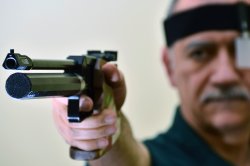
Who hasn’t challenged their friends at the shooting range, saying they’ll be able to achieve the smallest group, aiming at a standard competition target, from 25 meters of distance? The loser offers everyone else a drink. This is an article for all of you out there who have always had to foot the bill and for those of you who have always dreamed of a payback…both moral and financial…since those drinks tend to add up…
First of all, you need to know that accurate shooting requires constant training and a set of very precise rules and it also requires knowledge of particular psycho-motoric mechanisms. The training is a complex process, didactical and methodological and it consists of repeating the same exercises over and over again, observing quality principles, whose number is ever-growing and that progressively stimulate physiological processes, improving your fitness and performance.
After this long introduction, let’s get real and see what exactly you can do to group those shots towards the 10 area.
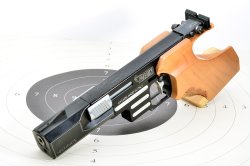
There are always many factors against you, first of all, an instructor or a friend may give you their advice, which is often arguable or they can make you come up with problems you didn’t think you had and in this way, complicate your life even more. The shooting itself, even if you know just a few rules, is simple: all you need to do is to hold the gun well, point it towards your target, aim, correctly pull the trigger and that’s it. Don’t mind the people who add insignificant problems or talk about cartridge, grips you should mold every time the temperature changes or adjustments of the aiming sights based on every temporary small cloud that may change the weather conditions. Very often, we hear shooters miss the mark completely and blame it on the ammunition, bad lighting conditions or their gun. We’d like to remind you that firearms, especially those used for short distances like pistols and revolvers, unless blemished with some important structural flaw, are very precise, even if their barrel is short.
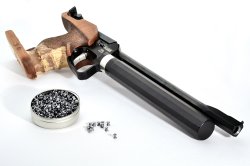
However, some guns are not appropriate for precise shooting, especially if you are a beginner. If you want to get a good start, it is best to lay your full powered 9mm or .40 S&W guns back in the safe and take a .22 LR caliber gun, which is easier to handle and it is the cheapest firearm – both from the gun’s price itself and the cost of ammunition - which allows you to get excellent training and repetitions without spending a lot of money on ammunition or time in order to reload it. The only pistol better than .22 LR is the Co2 airgun pistol, which serves this purpose very well. This gun is even cheaper and it allows you to control the shot placement on the target without having to take the bullets out. In this initial phase, you need to practice your posture, aiming and shooting, so the only difference between a .22LR and a .45 ACP is the “bang”. Usually, an air gun or a .22 LR caliber gun, which usually come with adjustable iron sights, can usually be rented at your usual shooting range so you won’t even have to buy it. Once you’re at a good point with these small-caliber guns, you can take out your “full size” gun which will require adjusting to its greater recoil. In the beginning, you should stay away from guns with less visible or old-fashioned aiming devices like back-up guns, western style or the muzzle loader guns. These weapons can be used only later, once you learn the basic shooting techniques.
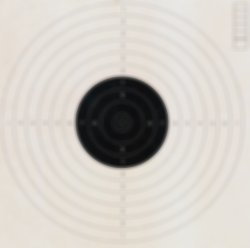
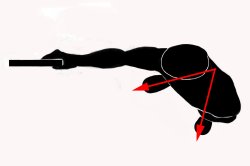
Now let’s examine what are the shooting phases, especially when it comes to using a handgun. This individual activity requires physical actions of great ability, executed with great precision and correct self-control.
If any of the following components are missing: technique, physical and mental preparation – you won’t get the results you hoped for. You’ll have to work hard to earn that drink!
Shooting a handgun is done in a specific position, which depends on the target. However, it should be as natural as possible. Your weight should be equally distributed between your legs. Your feet shouldn’t be spread wider than your shoulders. Precision shooting, executed with one hand requires your feet and your torso twisted to 45° from your target. In this way, you won’t be stretching your neck, your torso and your arm for no reason. Some shooters prefer side shooting. Without imitating other people, everyone should just find the most comfortable position that allows you to eliminate swaying. The arm you don’t use should be relaxed and tucked away, with your hand in the pocket or underneath the belt. Then, once you get a good heft, point the gun towards your target and align the gun with the target, minding the aiming devises. While holding your breath, start squeezing the trigger until the shot is released. Once the shot is out, you need to follow through. During this process, many mistakes can be made, usually regarding the grip, aiming or the trigger pull control.
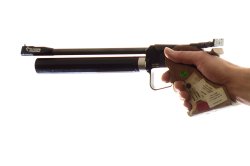
One of the contributing factors to a good shooting is a good hold of the gun. The right grips should allow us to hold the gun in the same way all the time. A good grip should make the shooting easier, allowing the index finger to correctly reach the trigger. A good strong hold of the grips that doesn’t require excessive strength allows the gun to get back vertically to its direction after every shot, in this way allowing a fast and correct adjustment of the aiming devices.
The hold should allow the first two phalanges of your index finger to stay away from the external side of the gun, while the fingertip of the last phalange should reach and touch the trigger well in order to diminish the strength needed for a vertical traction on the gun’s axis.
To avoid interrupting the shooting action, the thumb needs to remains still. The shooter should avoid pushing it downwards, using it to support the gun or to move it while shooting. The center of the second phalange of the middle, annular and pinkie finger should be on the anterior vertical axis of the grips.
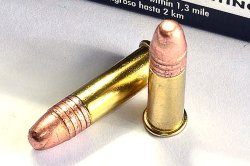
Once you are holding the gun correctly and have assumed a good position, aim the gun by lifting it in front of your eyes, without lowering your neck when looking for the aiming devices. What happens the first few times we try to look through the aiming devices? It makes us feel as if our personal earthquake just kicked in, and it affects only our shooting spot.
This is why it won’t be useful to rent a shooting gun which has bigger weight in the muzzle area because it won’t sit still and your results won’t be as good.
These fears aren’t completely forgettable, they are natural and due to the contrasting actions of the agonistic and antagonistic muscles which need to be trained and used to create balance that we really need. Excessive fear could be due to a lack of training, due to the fact that you’re not used to the gun’s weight, the fact that it takes you more time to aim the gun, and other emotional factors. There is no point in fighting these oscillations, the only solution is to relax and wait for the time and training to do their work and these movements will be less frequent.
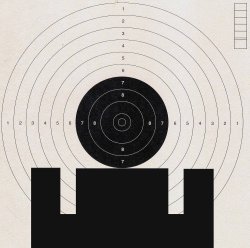
Academic shooting with a gun presumes that the target is placed at 25 meters of distance. For precision shooting, you need a good vision and good aiming devices. You need to set the front sight using your dominant eye. Setting the front sight, since the human eye can’t focus on two mutually distant objects, allow you to make less precision errors. Keeping both eyes open, closing them or closing just one with a bandage or an eye cover…it is all very subjective because it depends on your sight. When it comes to aiming at the target, the shot is not an absolute-precision shot, but it is a shot created with a particular balance where the technical action, physical stability and mental focus need to be perfectly synchronized.
This means that you shouldn’t look for a specific point on the target, but you can let the sight sway inside of an imaginary circle, which allows our oscillations to be more limited and the diameter of our group on the target to be smaller.
Often, you can see shooters at the shooting range turn the target to their blank side and then they draw a circle or a black dot, as a reference. They couldn’t be more wrong. In this way, your eye tries to focus on the circle or a black dot and it’s more likely that you’ll make a mistake.
In order to train your eye to focus the front and rear sight, a great exercise would be dry firing and only then using a completely blank target. This exercise works better because you have nothing to focus on and you need to rely on your aiming sights.
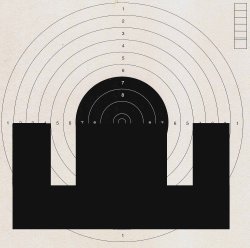
Target training of Free Pistol or Standard, using a pistol with adjustable aiming sights, implies that the targeting area, towards which you point your gun, in order to get the best results, is white, between the black dot and the end of the target. This “zone” technique is used in almost all shooting competitions. If you shoot in the center, you won’t see the contrast between the black aiming devices and the central black part of the target. If the front sight is positioned to go out of the circle, the flickering of the gun is at its maximum and the eye sends negative signals to our brain which prevents us from shooting perfectly; furthermore, you can’t see the front sight if it goes to the black area. If you keep the aiming devices in the white area, distant enough from the black spot, your eye won’t be able to see that many oscillations and you can be more relaxed and focus on the shot.
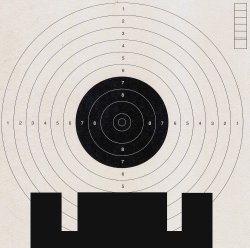
Pulling the trigger is the most important part of the task when you are trying to get a good shot and it is also the move that causes the most problematic and common errors. A common mistake in the process of the shooting consists of squeezing the trigger suddenly when you get the perfect vision of the aiming devices which seem stable. The shooter, in this fraction of time, applies abrupt force and in this way breaks the perfect alignment of the gun and it all results in a bad shot in the end.
Another mistake that, combined with the abrupt squeeze of the trigger, leads to the shooter missing the mark completely, is applying additional force on the grips. Those who never wanted to practice without a target, simply by shooting, especially with big-caliber guns usually hold the gun with both hands and in this way adds up to their mistakes. This wrong way of training allows the shooter to get the bad habit of fighting the gun’s recoil before it actually happens, by pointing the muzzle downwards before the shot is out.
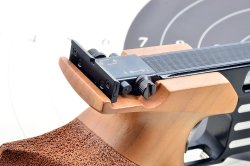
To perfect your shooting, you need to shoot without a target, which means without the trouble of the shot’s direction and using only your stronger hand. A simple shooting drill has the purpose of forming the stereotypical and correct technique and to learn it. During these exercises, the index finger needs to perform a progressive pressure, continuous and firm, on the trigger, while the hand, which is holding the grips, applies constant pressure during the entire shooting sequence. Once you stop shooting, when you don’t want to interrupt your concentration, you should do a follow through, so still aiming mentally, controlling the reactions of the aiming sights and allowing the mental analysis of the received information during the entire technical action. The range in which the shot should be taken is between 5 to 8 seconds but this is very subjective.
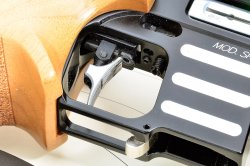
A good training technique implies, once you’ve exercised various shooting components with particular focus on the dry fire drills, to test everything you’ve learned. You should target shoot from 25 meters of distance, aiming at the white part. If you get a good result, you’ve memorized the aiming and shooting actions. Then, you can move on to the numbered targets so that you can control your shooting focus and the aiming devices, without being distracted by the black target spot or the wish to get a good score. You need to get more-less the same group as when you use the blank target.
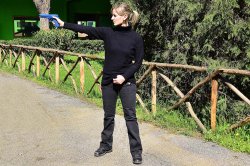
Your training should be mainly focused on creating motor memory because it is the continuous and correct repetition of gestures that will allow you to get the skills you need to make your moves that compose various shooting stages automatic. Shooting mountains of ammunition without understanding why you’re making those mistakes, makes you get worse and you get a bad habit of wrong moves. Once you get a bad habit due to bad training, you will need to re-program your muscular memory because it was wrong to begin with, and it will be more difficult than to simply start from scratch. Training doesn’t necessarily need to be fun. You learn to shoot well and you get better with time only if you know how to shoot well. Maybe after all those trainings, you may want to participate in some shooting competitions and who knows, you may become a true champion.










